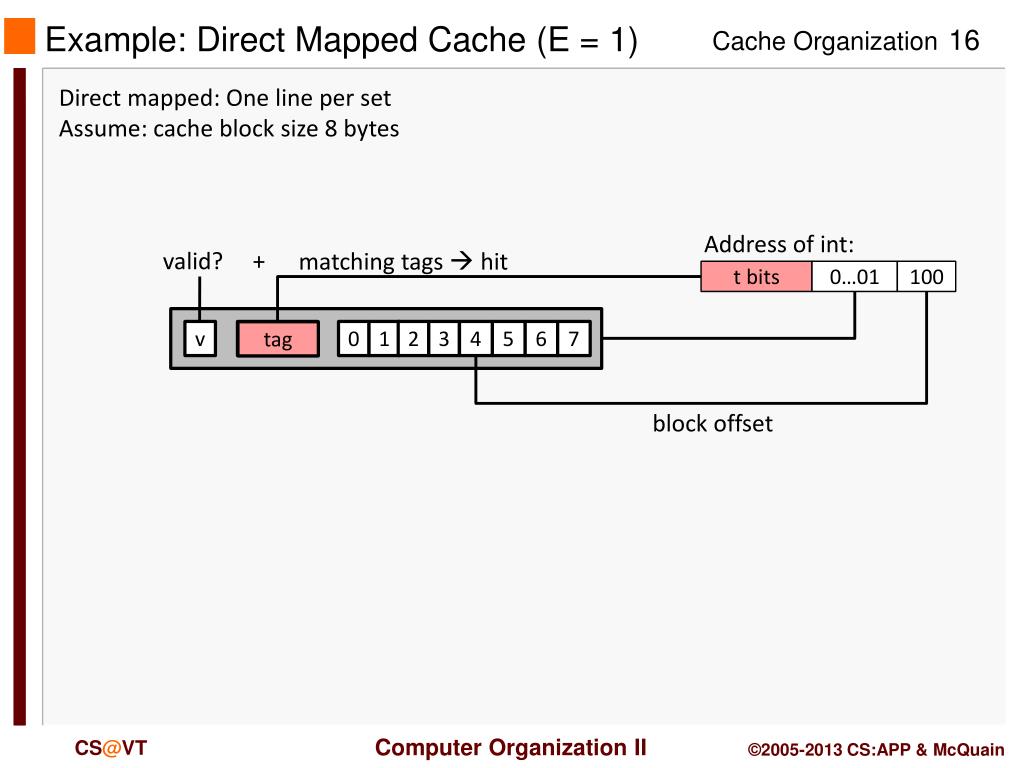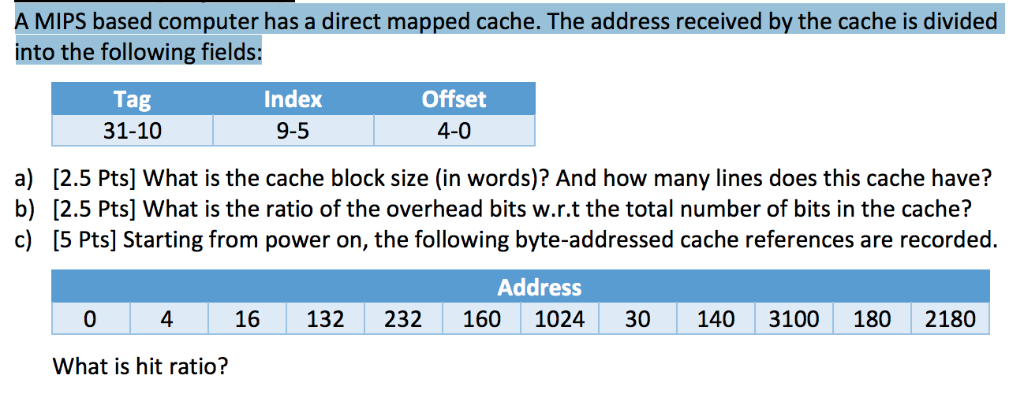

A starts in set index 0, block offset 100 (see step 7). Consecutive elements of an array will lie in adjacent block offsets until the end of the cache block is reached.Ī is composed of 2B shorts, so each element will occupy two block offsets. Be sure to consider the size of the data elements. If the previous access was a miss, bring in an entire cache block of data into the cache, using the memory accesses index and offset mapping. Step 9: If the previous access was a hit, hurray! Record the hit and determine the next memory access. A starts in set index 10, block offset 00 (see step 7) The access is a cache missĪ is composed of 1B chars, so each element will occupy one block offset. Nothing is in the cache, so A is not in the cache. Step 8: Determine whether first memory access is a hit or miss

Step 7: Determine the memory address of the first memory address and parse the address into tag, index, and offset Step 6: Determine the first memory access of the program It often convenient to think of a direct-mapped cache as a matrix whose number of rows are determined by the number of blocks and whose number of columns is determined by the number of bytes per block (i.e., the number of offsets) Step 5: Use the information above to visualize the cache. Step 4: Determine the number of bits remain for the tag Step 3: Determine the number of bits needed to encode the block offsets Step 2: Determine the number of bits needed to encode the block indices Step 1: Determine the number of cache blocks A is stored at address 0x12345678ġ6B direct-mapped cache with 8B cache blocks with 32-bit addresses.

Program 1ġ6B direct-mapped cache with 4B cache blocks with 32-bit addresses. We will start with the assumption that the data is not initially in the cache.
DIRECT MAPPED CACHE TAG INDEX OFFSET CODE
Let’s compare two instances of the similar code above running on different machines to calculate the number of hits and misses. Additionally, different machines will have different cache designs. Each time this program executes, the array A may be allocated to a different address. Let’s make the following assumption, only the array A is allocated to data memory while avg is register allocated. Short A // A filled in elsewhere int avg = 0 for ( int i = 0 i < N ++ i ) avg = avg / N


 0 kommentar(er)
0 kommentar(er)
